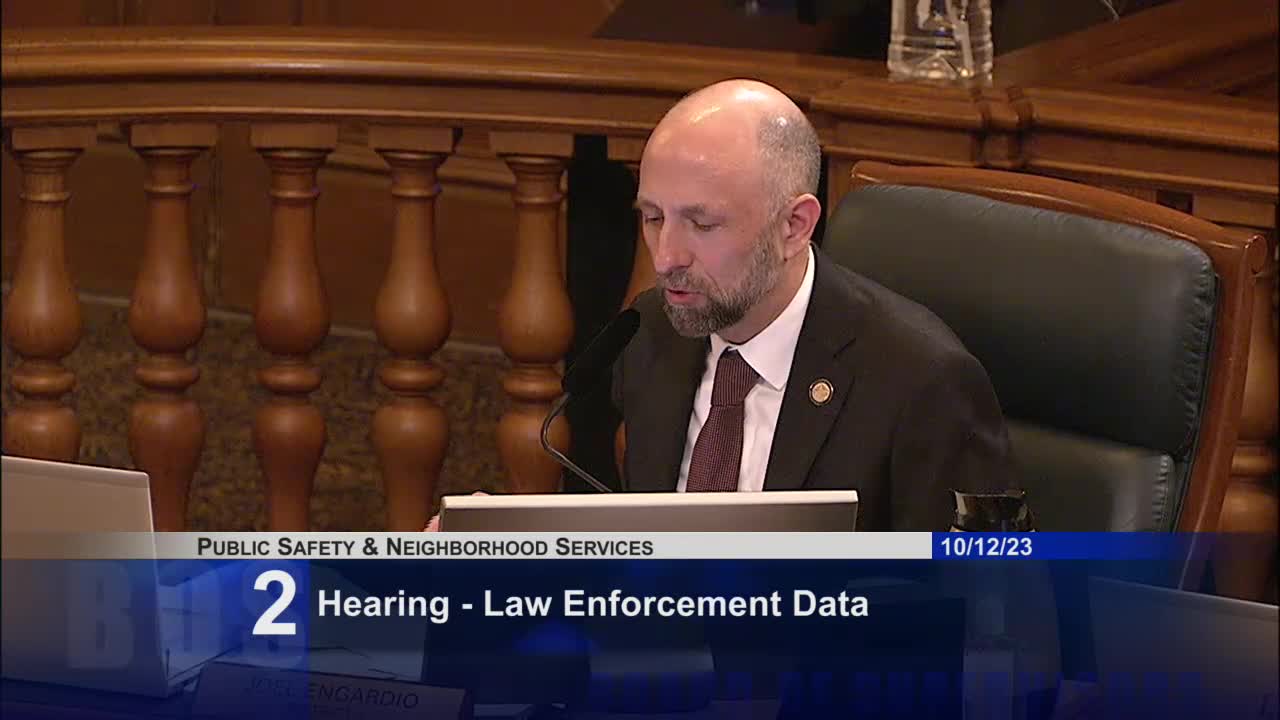San Francisco officials discuss integrating crime data for better public access
October 12, 2023 | San Francisco County, California
This article was created by AI summarizing key points discussed. AI makes mistakes, so for full details and context, please refer to the video of the full meeting. Please report any errors so we can fix them. Report an error »

In a recent San Francisco County government meeting, officials discussed the need for improved transparency in the criminal justice system, particularly regarding demographic data related to victims and defendants. The conversation highlighted the challenges of presenting accurate information while ensuring privacy and compliance with existing laws.
One key point raised was the absence of demographic data in public dashboards, which officials attributed to historical issues with data quality. The sheriff's department had previously struggled with accurately coding demographic information, leading to incomplete data being shared with the courts. However, improvements have been made since 2021, allowing for better demographic detail to be included in future reports.
Officials acknowledged the pressing demand from journalists and the public for comprehensive demographic data, which is seen as essential for understanding crime trends and the justice process. They discussed the possibility of enhancing the current data systems to provide more accessible information, although they noted that resource constraints and the need for careful data management remain significant hurdles.
Another innovative suggestion was made regarding the creation of a more user-friendly system for tracking cases through various departments. By linking public documents across the police, district attorney, and court websites, residents and journalists could more easily follow cases from arrest to trial. This idea aims to streamline access to information, reducing the frustration often experienced by those seeking to understand the justice process.
The meeting also touched on the broader context of the justice system's implementation and the ongoing efforts to improve inter-agency collaboration. While there are still challenges to overcome, officials expressed a commitment to finding solutions and enhancing transparency for the benefit of the community.
As San Francisco continues to navigate these complexities, the discussions from this meeting reflect a growing recognition of the importance of accessible and accurate data in fostering trust and understanding within the community. The next steps will involve further exploration of partnerships and innovative solutions to meet the public's needs for information.
One key point raised was the absence of demographic data in public dashboards, which officials attributed to historical issues with data quality. The sheriff's department had previously struggled with accurately coding demographic information, leading to incomplete data being shared with the courts. However, improvements have been made since 2021, allowing for better demographic detail to be included in future reports.
Officials acknowledged the pressing demand from journalists and the public for comprehensive demographic data, which is seen as essential for understanding crime trends and the justice process. They discussed the possibility of enhancing the current data systems to provide more accessible information, although they noted that resource constraints and the need for careful data management remain significant hurdles.
Another innovative suggestion was made regarding the creation of a more user-friendly system for tracking cases through various departments. By linking public documents across the police, district attorney, and court websites, residents and journalists could more easily follow cases from arrest to trial. This idea aims to streamline access to information, reducing the frustration often experienced by those seeking to understand the justice process.
The meeting also touched on the broader context of the justice system's implementation and the ongoing efforts to improve inter-agency collaboration. While there are still challenges to overcome, officials expressed a commitment to finding solutions and enhancing transparency for the benefit of the community.
As San Francisco continues to navigate these complexities, the discussions from this meeting reflect a growing recognition of the importance of accessible and accurate data in fostering trust and understanding within the community. The next steps will involve further exploration of partnerships and innovative solutions to meet the public's needs for information.
View the Full Meeting & All Its Details
This article offers just a summary. Unlock complete video, transcripts, and insights as a Founder Member.
✓
Watch full, unedited meeting videos
✓
Search every word spoken in unlimited transcripts
✓
AI summaries & real-time alerts (all government levels)
✓
Permanent access to expanding government content
30-day money-back guarantee

